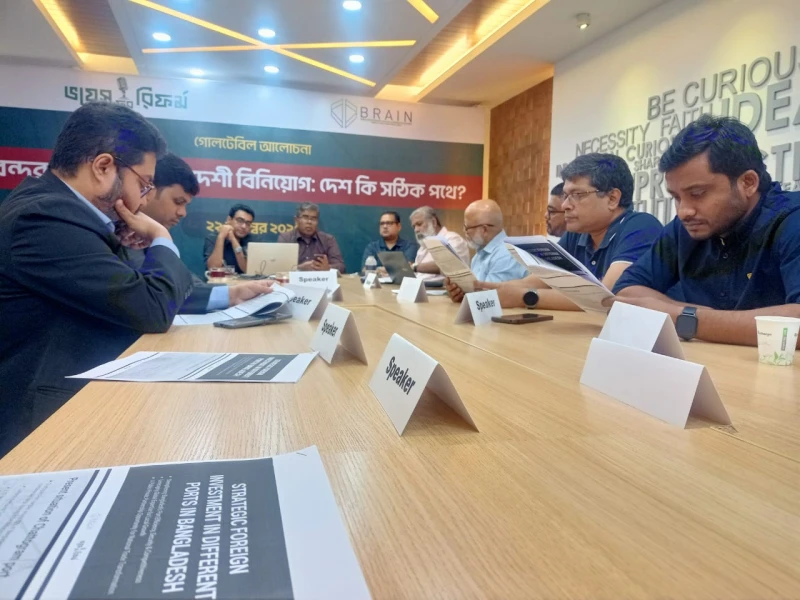Several port experts and economists on Saturday raised concerns over what they described as “ambiguities and risks” in the government’s newly signed agreement with a Danish company for developing the Laldia terminal in Chattogram.
Speaking at a seminar titled “Foreign Investment in Chattogram Port: Is Bangladesh on the Right Track?” organised by the think tank Voice for Reform, participants said the project appears promising on the surface but could become “harmful” for Bangladesh if the agreement contains structural weaknesses.
Bangladesh Merchant Marine Officers’ Association President Anam Chowdhury said the interim government seems to be repeating the mistakes made by the previous Awami League administration during the development of Payra Port.
“The government has not clarified anything about dredging. Even the vessel measurement parameters provided appear inconsistent. Payra Port struggled mainly due to dredging issues — Laldia could face a similar fate,” he warned.
Jyoti Rahman, Applied Macroeconomist at Australian National University, said while complete disclosure of such agreements is rare, key terms that affect the public must be made transparent.
It is being said that the terminal has been leased to APM Terminals, part of Denmark’s Maersk Group, for 30 years. In reality, it is 48 years — a 33-year concession deal with an option to extend by 15 years depending on KPIs,” he noted.
Rahman cautioned that relying on foreign operators without improving port efficiency will only deepen Bangladesh’s dependency rather than enhance capacity.
Shafquat Rabee Anik, Lead of Centrist Nation, said the government appears to be in undue haste over port leases.
We saw similar rush regarding Chattogram Port earlier, which has now ended up in court. Investments are essential, but not at the cost of national interest,” he said.
Voice for Reform called on the government to disclose several key terms of the agreement, especially operational KPIs such as moves per hour, vessel turnaround time, berth occupancy ratio, equipment uptime, yard utilisation and gate processing time.
The organisation also stressed transparency regarding social and governance KPIs, including local employment numbers, workforce size, safety and incident rates and overall governance indicators.
For economic KPIs, they said the public should know details about TEU handling capacity (import, export, empty), cost per TEU for traders, customs revenue growth, reduction in demurrage and storage fees and the number of mainline vessels calling at the terminal.
APM Terminals has said the Laldia facility will be operational in 2030, with annual container handling expected to rise by 800,000 TEUs. The government, however, has stated the launch year as 2029.
According to Hamburg Port Consulting, Chattogram Port’s four existing container terminals together have a capacity of 3.5 million TEUs per year. With Laldia adding another 800,000 TEUs, capacity is projected to reach 4.3 million TEUs by 2030.
APM Terminals has announced an investment of more than USD 550 million for the project. Construction will create around 1,000 jobs, while the terminal is expected to employ about 500 people once operational.


 Prev Post :
Prev Post :
-1763820673.webp)